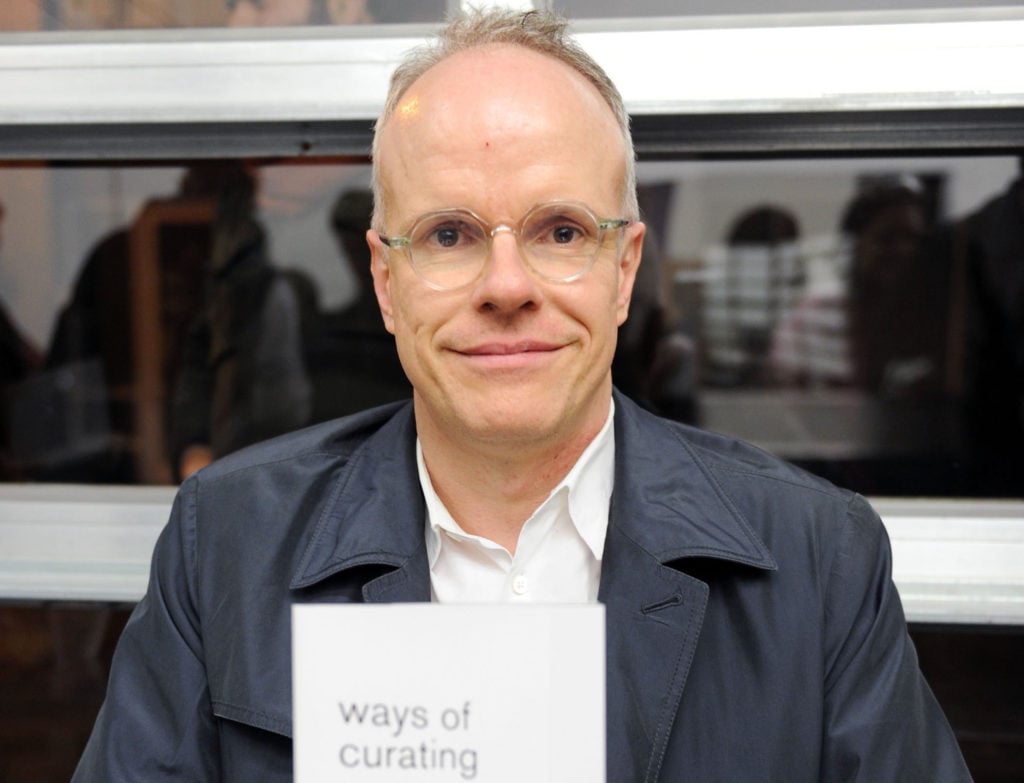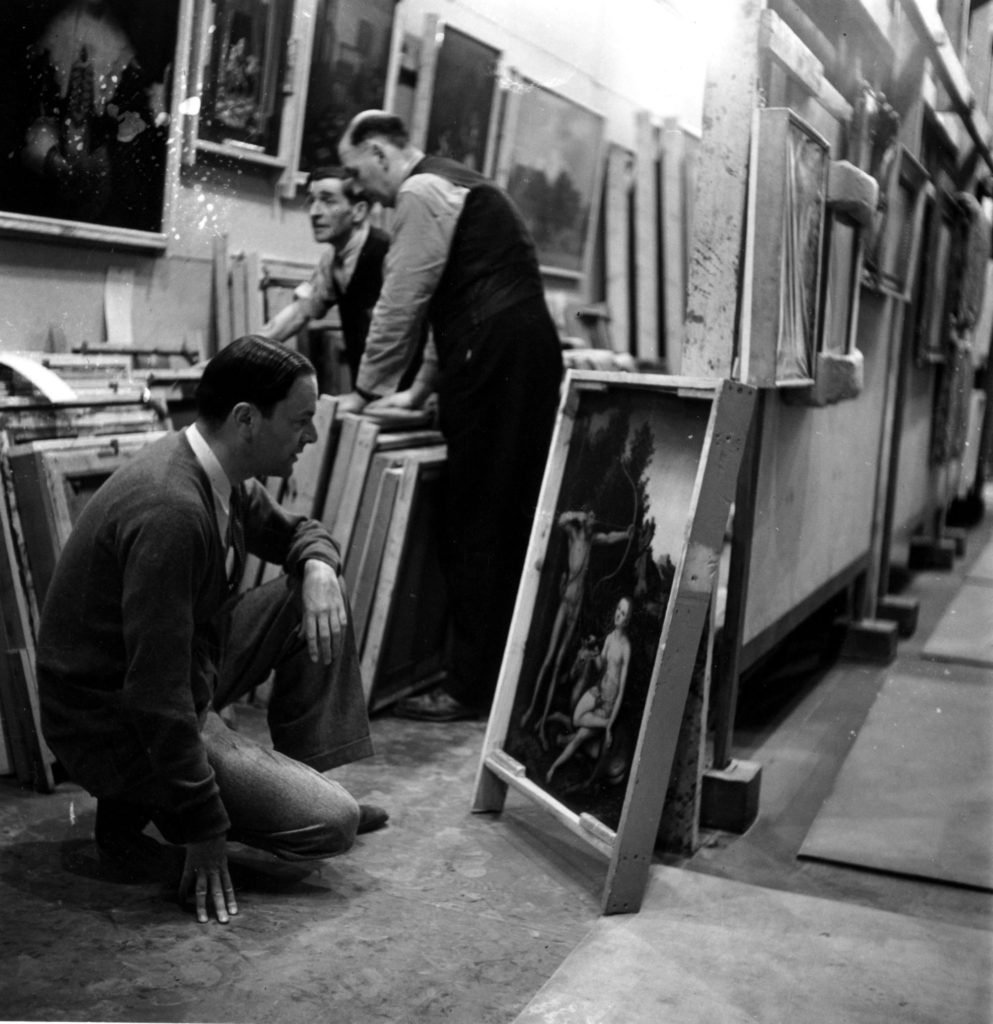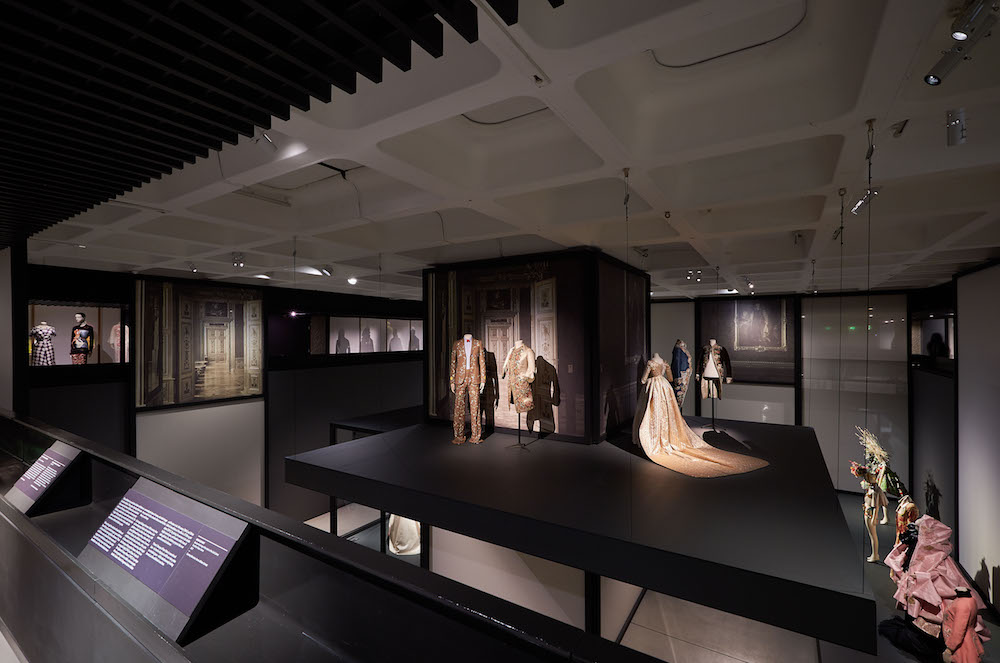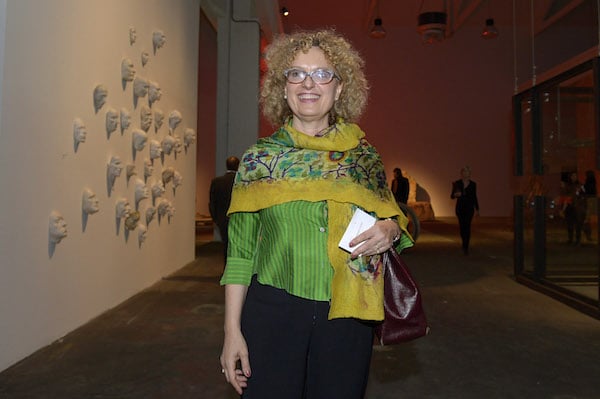Opinion
Has the Art World Had Enough of ‘Curators’?
Organizers, directors, agents ... New terms are taking over the exhausted c-word.

Organizers, directors, agents ... New terms are taking over the exhausted c-word.

Hettie Judah

After years of curated socks, cheese, and bookshelves, are certain quarters of the art world finally starting to distance themselves from the term?
Who wants to be a curator? Not everyone, it seems. At least, not anymore. Freewheeling, globetrotting, sprinkler of magic pixie dust: “curator” has been a label eagerly co-opted by many, both in the art world and beyond.
After a decade or more in which soi-disant curators bestrode the earth like canapé-guzzling colossi, a subtle schism is underway, led by a number of art world personnel drawn to the use of alternative wording. In particular, the embrace of terminology more commonly in currency in the mid-20th century has seen a number of exhibitions emerge recently untouched by a curator, or at least by anyone now accepting the associations of such a term.

20th October 1942: Sir Kenneth Clark (1903 -1983), director of the National Gallery, closely examines a painting from the Royal Collection, Cranach’s ‘Adam and Eve’, to see if it is in need of restoration. Photo Fred Ramage/Keystone Features/Getty Images.
At the Collezione Maramotti in Reggio Emilia, Italy, the abstract painting show “Figurative Geometry” has been “organized” by Bob Nickas. “Organizing” exhibitions was the kind of activity undertaken by Kenneth Clark in the years leading up to and around the Second World War (think, for example, of the influential exhibition of Italian art held at London’s Royal Academy in 1930, which Clark co-organized with David Lindsay).
Some 90 years later it is once more in vogue. Two recent shows (of works by Jannis Kounellis and Dóra Maurer) were “organized” at White Cube Masons Yard, by, respectively, Mathieu Paris and Katharine Kostyál. So much for the woolly use of terms “curated by,” “curation” and “curating” (Is there a “How’s my curating?” bumper sticker yet?).
The devil-may-care deployment of the label “curator” is likewise receiving short shrift in certain quarters.

“The Vulgar: Fashion Redefined,” by Judy Clark. Installation images at the Barbican Art Gallery. Photo ©Michael Bowles Getty Images.
“Exhibition maker” Judith Clark is responsible for “The Vulgar,” currently on display at London’s Barbican Centre. It is a lavish and scholarly undertaking that manifestly represents many years of research, not to mention considerable scenographic flair and innate insight, but not, apparently, a role Clark would identify for herself as “curator.”
Jens Hoffmann has likewise long espoused the term “exhibition maker.” For “Animality,” an expansive exploration of art’s various relationships to the beasts of the earth and fowl of the air—not forgetting the creatures of the sea—at Marian Goodman Gallery, Hoffmann has granted himself the simple, authorial “by.” (For those keen to road-test job titles, I suggest taking a spin in “directed by,” as used by Harald Szeemann to describe his role in the exhibition and catalogue of “Live In Your Head: When Attitude Becomes Form” in 1969).

Curator Massimiliano Gioni attends a preview of “When Attitudes Become Form: Bern 1969/Venice 2013,” at the Fondazione Prada’s Ca’ Corner della Regina, Venice, on May 29, 2013. Photo Vittorio Zunino Celotto/Getty Images for Prada.
The schism has been coming for a while. If anything it’s surprising that it has taken so long to grow notable, with widespread mockery of curated cheese plates and their ilk having become something of a journalistic staple.
Back in March of this year, bone-dry British comedian Stewart Lee attained new meta levels in the field of curator-skewering after the satirical magazine Private Eye described him as the (in quotes) “curator” of a music festival. Lee’s frankly Dadaist response in the Observer imagined an “International Curatorship of Curators,” of which he was “acting curator.” A (fictional) exchange within this (fictional) society elicited the deathless suggestion that Hans Ulrich Obrist ‘“couldn’t curate his way out of an elephant’s ballsack.”
(To further pile meta on meta: when Obrist topped ArtReview’s Power 100 list last month, the fact that Lee’s column was illustrated with a portrait of the Serpentine Gallery director was cited approvingly in his entry text as suggestion that he was now synonymous with the term “curator” in the popular imagination.)

The curator Carolyn Christov-Bakargiev. Photo courtesy Fondazione Sandretto Re Rebaudengo .
It is two years already since the publication of David Balzer’s Curationism, the book that arguably announced open season on the proliferation of “curator” as a kind of flattering catch-all term for “person who can choose things.” Balzer opened his investigation with an interview with Carolyn Christov-Bakargiev, having noted her choice of the word “agents” rather than “curators” for the team working with her on Documenta 13, back in 2012.
Christov-Bakargiev may have given Balzer short shrift, dismissing his enquiry into the migration of the terms “curator” and “to curate” into the cultural mainstream as “a sociological question, not an art question,” but three years later she continued to explore new terminology in relation to the Istanbul Biennial, which was “drafted” by her and “a number of alliances.”
There was a touch of snark and juvenile sniggering in response to Christov-Bakargiev’s language relating to these “alliances” at the time (the run down of attributes provided by these alliances memorably included “the mindfulness of Marcos Lutyens, the acute gaze of Füsun Onur,” and “the youthful enthusiasm of Arlette Quynh-Anh Tran”).
This might perhaps explain some wariness on behalf of institutions regarding the shift in terminology: White Cube politely declined to offer formal comment when invited to do so for this article.

Installation view of the Rebecca Ackroyd and Sebastian Jefford-organized exhibition Modest Villa Immense Versailles (2016) at Kinman Gallery. Photo Ben Westoby.
Artists Sebastian Jefford and Rebecca Ackroyd, who organized the exhibition “Modest Villa Immense Versailles” at Kinman gallery in London earlier this year, were rather more forthcoming, explaining instead that the term simply didn’t seem appropriate to them.
“Neither of us really consider ourselves to be curators,” explained Ackroyd. “It’s not that we have a problem with that term, it’s more that we saw the show as a testing ground to explore a number of ideas in our own work as well as the other artists we selected.”
“We chose deliberately not to use [the term curator] as it seemed to formalize our ideas around the exhibition in a way,” added Jefford.
It is hard not to feel that this recent urge to clarify or reassess what it means to be a curator (and those instances in which one might not be one) is a response to the promiscuous adoption of the term outside of the art world, though of course to admit as much might solicit accusations of snobbery.
Prejudice aside, the widespread deployment of the term “to curate” over multiple fields marks a depletion in our vocabulary. When bookshelves are curated, what becomes of librarians? When shops, what of buyers? When music festivals, what of programmers?
Suggesting content aggregation of any sort as a kind of art form in itself, the term has shifted to denote a kind of non-specialist specialist. So if the meaning has changed, surely it’s appropriate that usage should likewise?